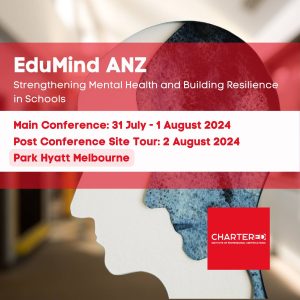The Albanese government aims to deliver a historic Universities Accord by December, with important submissions from a diverse range of tertiary education sector stakeholders designed to help create a “visionary plan” for the sector across the next 10 to 30 years. One organisation is calling for sweeping changes to create greater tertiary education opportunities across regional, rural and remote Australia.
When NSW chief scientist Mary O’Kane launched a discussion paper earlier this year, inviting submissions, she called on stakeholders to come forward with “big ideas” and imploring them to be brave.
For the Society for the Provision of Education in Rural Australia (SPERA), it was an opportunity they couldn’t afford to ignore.
SPERA brings together members from various sectors of Regional, Rural, and Remote (RRR) communities across Australia, with an aim to promote and support education in RRR Australia.
In their recent submission to the Australian Universities Accord, the focus was on Creating Opportunities for All Australians, with a particular emphasis on what is relevant for RRR Australia.
Their recommendations, according to a SPERA spokesperson, hope to address the unique challenges faced by RRR communities in accessing higher education.
“SPERA believe that by working together with universities, governments, and other stakeholders, we can create a more equitable and inclusive system that will benefit all Australians, regardless of where they live,” their statement said. “Our submission outlines a number of specific recommendations that SPERA believe will help to achieve this goal.”
Guiding principles that support improved tertiary education across Australia
The fact that RRR students are currently participating in higher education at less than half the rate of metropolitan Australia is a significant issue that needs to be addressed (Halsey, 2018; Commonwealth of Australia, 2019; Productivity Commission 2019).
The figures, SPERA says, represent a “persistent inequity”.
And that inequity means that, for many talented people living in regional, rural and remote parts of Australia, the opportunity to explore individual potential can be limited.
To counter this,SPERA advocates for four guiding principles. If supported in policy, these principles will enable larger cohorts of RRR students to aspire to, access and complete higher education in the regions.
The four principles:
1. Widening participation and outreach programs
These programs should be available to all students, regardless of their location and socio-economic background. Widening participation and outreach programs could include mentorship, career counselling, access to higher education and career opportunities. Exploring information about scholarship programs is also important. With these supports, SPERA says, students can set higher goals and strive for greater academic and professional achievements.
2. Free, place-based universally designed enabling programs
Delivering free, place-based, universally designed enabling programs ensures students in RRR communities have access to the necessary skills, knowledge, and support to access multiple institutions of higher education, rather than just one university.
These programs should be adaptable, flexible and tailored to meet the needs of the local community. If the programs offered vocational credit, it could be a positive way to build students’ confidence and capacity to succeed in their chosen fields.
“By providing students with the tools and resources to access higher education, we can empower them to pursue their dreams, improve their lives, and contribute to the development of their communities,” SPERA’s submission states.
3. Place-based local higher education support
Place-based local higher education support provides students in RRR communities with access to higher education in their local area. These support models can include Regional University Centre models, regional university campus models, local library, school, and community-based HE support models.
“These models are designed to provide students with access to quality education and support services in their local area. By providing local higher education support, we can ensure that students in RRR communities have the same opportunities as those in urban areas,” SPERA says.
4. Community-led and owned
Community-led and owned solutions acknowledge that a one-size-fits-all approach does not work across Australia. Local communities are best placed to understand their own needs and develop solutions that are tailored to their unique circumstances. Government should fund community-based solutions through partnerships with local communities, including support services, students, local government, and industry. By empowering local communities to take ownership of the solutions, we can ensure that they are sustainable, responsive, and effective in meeting the needs of RRR communities.
The SPERA submission to the Australian Universities Accord also included six examples of real higher education (HE) students from RRR areas. Although the examples are based on real students, names and situations have been changed to protect their privacy.
“We do not intend these examples to lead to generalisations, rather they show that every student’s experience is unique to there personal situation and there is no one-size-fits-all model for supporting students from RRR areas,” SPERA says. “Through these examples, SPERA hope to highlight the very real challenges that students from RRR areas face in pursuing higher education and the importance of providing targeted support to help them achieve their goals.”
To learn more about the SPERA submission and the six case studies they believe showcase examples of how real people can be better supported within the tertiary education sector, the submission is available for download here.








